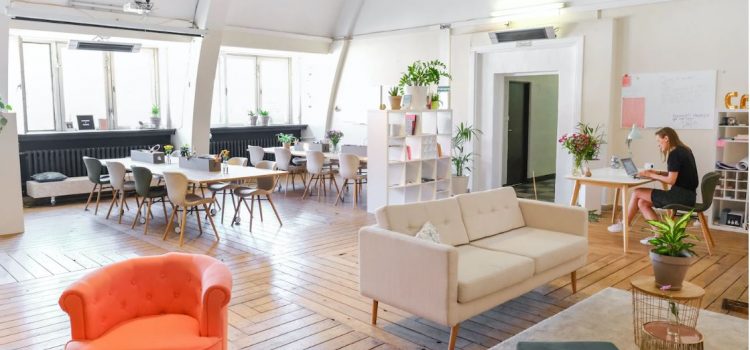
This is a free excerpt from one of Shortform’s Articles. We give you all the important information you need to know about current events and more.
Don't miss out on the whole story. Sign up for a free trial here .
What’s behind the rise in coworking spaces? What benefits do the spaces offer, and how are they adapting to users’ needs and preferences?
Demand for coworking spaces is exploding globally, with a projected near-doubling of spaces by 2024 to 42,000. As coworking grows, the market will likely stratify into budget-level, moderate, and luxury tiers that cater to different audiences.
Here’s a look at some predictions for the future of coworking spaces.
The Rise of Coworking Spaces
Once seen as a fad for freelancers, coworking spaces are rapidly becoming essential ecosystems tailored to today’s diverse workforce. The meteoric rise of these shared offices looks unstoppable as they evolve to promote productivity, flexibility, and sustainability. The future of coworking spaces is looking bright.
The Origin of Coworking
Coworking spaces are shared offices where freelancers, remote employees, and entrepreneurs work together in a communal setting. They first emerged in the 1990s as “hackerspaces” for coders to collaborate. The spaces later took off in the 2000s, providing flexible, affordable workspaces that promoted networking and creativity.
Coworking spaces are more popular than ever today, as millions of hybrid and remote workers seek places to work, meet clients, and find community outside the home.
Diverse Users and Growth
Experts say that coworking spaces appeal to a diverse range of users including freelancers, who make up roughly 40% of coworking space members, and entrepreneurs and small businesses, who comprise 36%.
In the United States, the number of coworking spaces surged by 55% in just five years—from 4,000 in 2017 to 6,200 in 2022. Globally:
- Coworking locations are projected to nearly double in 2024, to 42,000.
- The number of users is expected to reach 5 million by 2024.
- The coworking market is set to reach an estimated $15.5 billion by 2027.
- Coworking spaces could comprise 30% of corporate office space by 2030.
Coworking Benefits
Coworking spaces offer multiple benefits that contribute to their popularity. One advantage is that the spaces foster networking opportunities through a range of activities, including formal events, group lectures, family days, book clubs, and intellectual gatherings.
Multi-location networks enable members to access multiple locations and offer additional flexibility for remote work. This global access extends to shared resources, tools, and technology.
Many coworking spaces offer perks like pet-friendly environments, local discounts, and mentoring programs to retain freelancers and small business owners.
Finally, surveys show that coworking spaces have a positive impact on workers’ work and well-being:
- 69% of users say they’re more productive in coworking spaces.
- 89% report feeling happier.
- 83% say they feel less lonely.
Coworking Space Trends
Developers say that as the workforce continues to evolve, coworking spaces are adapting to meet changing user needs and preferences. Key trends shaping the industry include:
Suburban coworking: With a growing emphasis on work-life balance, suburban coworking spaces are on the rise.
Coworking-as-a-Service (CaaS): Coworking spaces are expanding their offerings beyond physical space. Some now provide mentorship opportunities, venture capital access, and other services, fostering an ecosystem of support for budding entrepreneurs and startups.
Technology integration: The integration of technology such as 24-hour access and automated reservations is making coworking spaces more efficient and enhancing users’ experiences and productivity.
Sustainability focus: More coworking spaces are emphasizing sustainability by incorporating indoor and rooftop gardens, recycling and composting facilities, and policies to reduce the use of nonrecyclable materials.
Niche, inclusive communities: Specialized coworking spaces are emerging to cater to specific interests and diverse groups, like tech-focused individuals, artists, or those seeking socially conscious engagement.
Looking Ahead
As the market grows, some say it will stratify into tiers: As more providers enter, competition will increase, and budget-level, moderate, and luxury coworking options will emerge.

Want to fast-track your learning? With Shortform, you’ll gain insights you won't find anywhere else .
Here's what you’ll get when you sign up for Shortform :
- Complicated ideas explained in simple and concise ways
- Smart analysis that connects what you’re reading to other key concepts
- Writing with zero fluff because we know how important your time is







its explores the evolution of coworking, its diverse user base, and projected growth. It highlights benefits like networking, flexibility, and well-being enhancement. Emerging trends such as suburban coworking, Coworking-as-a-Service, and sustainability focus are discussed.